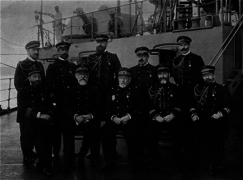Design
Design
Personality
Chart Properties
Your Cross represents the specific theme of your life. This cross embodies your unique potential & the lessons you're here to learn, providing a roadmap to fulfilling your life purpose.
We use the UTC birth time and date to do the calculations required to generate your Human Design chart.
Buy Tokens
Pay as you use, no expiry and no subscription required.Prompt Ideas
Get inspired with some epic prompt ideas.Francesco von Mendelssohn's Biography
German cellist and art collector, also known during the 1920s as a stage actor and theater director. He acquired additional notability with a lifestyle that some found eccentric. He drove a white Lancia cabriolet in which the seat covers were made of ermine, and often appeared in public wearing a red leather suit or a yellow silk dressing gown. With his friend Ruth Landshoff he like to turn up wearing an evening dress, while she, as his partner, wore his suit.
His great-x-3-grandfather, the philosopher Moses Mendelssohn (1729–1786), had become the ancestor of a prominent dynasty of bankers and musicians, notably Felix Mendelssohn and his sister Fanny Mendelssohn, who were thereby Franz’s first cousins three times removed (generationally).
Franz von Mendelssohn, who later Italianised his first name, was the son of the banker Robert von Mendelssohn and his young wife Giulietta. She was a daughter of the fashionable Florentine portraitist Michele Gordigiani. After her husband died in 1917 she moved in with the cellist Gaspar Cassadó, who was 26 years younger than she was, and moved back to Italy, leaving her teenage children, Eleonora and Francesco to look after the large family home at Königsallee 16 in Berlin’s Grunewald quarter. The house contained numerous antiquities and, most notably, the large art collection that Robert von Mendelssohn had amassed.
Francesco followed his father’s example, buying works by Toulouse-Lautrec, Segantini and Camille Corot. His greater love was for music and the theatre, however. As a pupil of Pablo Casals and Arthur Williams he became a professional cellist. He became a solo performer, and was also, at different rimes, a member of the Busch quartet and of the Klingler quartet.
He also wrote a book about Eleonora Duse, who was a friend of his mother’s and his sister’s God mother. He translated the plays of Luigi Pirandello from Italian, at the same time working as a movie actor and as a theatre director. Co-stars included Lotte Lenya, Peter Lorre, Fritz Kortner, Theo Lingen, Heinz Rühmann and Paul Hörbiger.
After the rise of the Nazis in 1933 Francesco von Mendelssohn stayed away from German speaking central Europe, spending most of the time between 1933 and 1935 in Paris. He also took the opportunity to extend and deepen his contacts in the United States. As early as April 1933 he staged Brecht’s Threepenny Opera at the Empire Theater on Broadway.
Mendelssohn spent the summer of 1935 in Venice and then, travelling with his sister Eleonora, Lotte Lenya, Kurt Weill and the impresario Meyer Weisgal, set sail in September from Cherbourg aboard the Majestic, in order to start a new life in New York City. Here he worked as a production assistant with Max Reinhardt.
Francesco von Mendelssohn had a history of melancholy that predated his emigration, and in his American exile he became a high level depressive, also suffering badly from alcoholism after 1937. He died from cancer on 22 September 1972, aged 71.
Link to Wikipedia biography
Francesco von Mendelssohn
Your Cross represents the specific theme of your life. This cross embodies your unique potential & the lessons you're here to learn, providing a roadmap to fulfilling your life purpose.
We use the UTC birth time and date to do the calculations required to generate your Human Design chart.


Louis de Marolles
1/3 Sacral Manifesting GeneratorDavid Bourillon
6/2 Emotional - Solar Plexus Manifesting GeneratorCarl Orff
3/5 Emotional - Solar Plexus ManifestorOle B”hn
6/2 Emotional - Solar Plexus Manifestor





